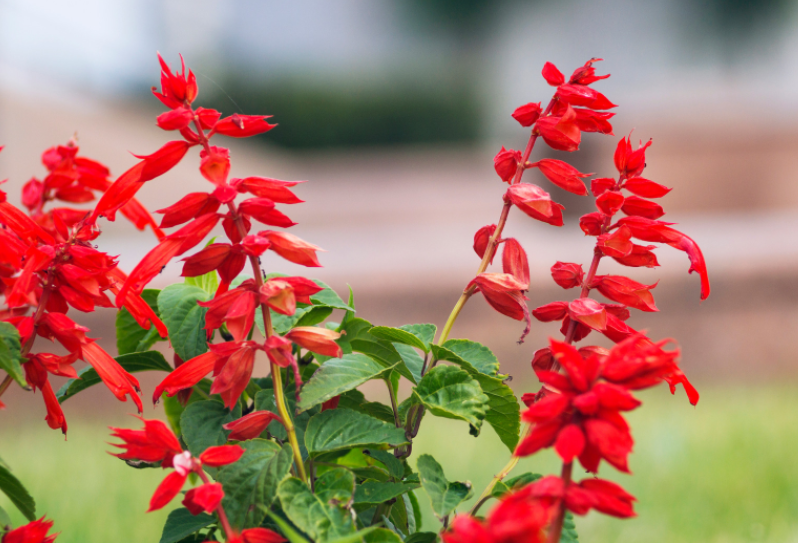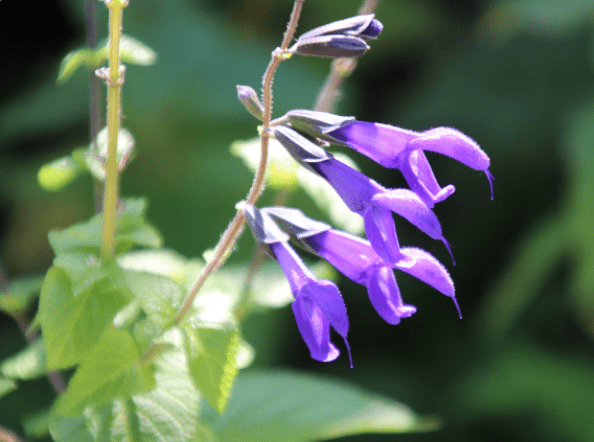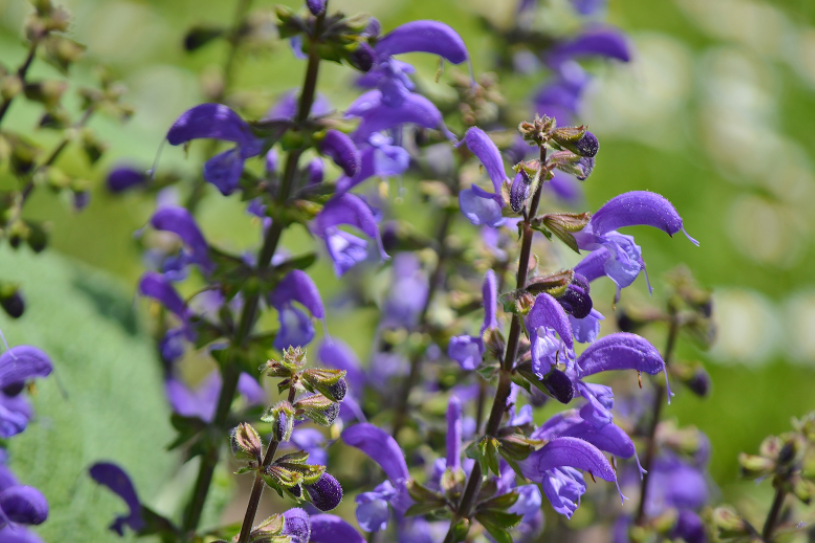Salvia Mystery Revealed
Most gardeners are familiar with the common salvia, often called scarlet sage, but several species of salvias are arriving at local garden centers.
Besides the reddish color, there is a white, a pink, a purple, and a pink-and-white blend.
Black and Blue salvia is a true perennial, often with blue to lavender spikes of flowers and white. It’s traditionally marketed during spring and summer, but many garden centers have it in bloom year-round.
The native tropical sage has leaves that are lighter green and flowers more spikelike than the common salvia.
Lady In Red Salvia Salvia Coccinea

One All-American Selections winner for 1992 was the Lady in Red variety, but there is also a white. It’s durable and blooms most of the year.
Lady in Red salvia Salvia coccinea
- Lady in Red Growth habit:
- A multi-branched perennial growing 18 to 24 inches tall.
- Light: Grows best in full sun, but tolerates light shade.
- Water requirement: Water weekly during hot, dry weather.
- Feedings: Apply a balanced fertilizer every 6 to 8 weeks from March through October.
- Propagation: Start new plants from seed or cuttings.
- Use: A year-round red-flowering accent for ground beds of container gardens.
Black And Blue Salvia

The Black and Blue Salvia, known botanically as Salvia guaranitica `Black and Blue’, is a gorgeous herbaceous perennial in the summer garden.
It begins blooming in early July and continues energetically through the heat of August and September until a harsh frost knocks it down.
Some have been known to endure temperatures of 10 degrees, especially if properly mulched, although it is advisable to take cuttings off the plant in the fall to have fresh plants for the garden next season.
Black and Blue grow swiftly and can reach heights of 4 to 5 feet in a single season, making them perfect for the back of the border.
Because salvias are members of the mint family, this subshrub’s sturdy stems are adorned with anise-scented, mint-green leaves.
Salvia guaranitica, a native of South America, was described and identified for the first time in 1833 and has since been a favorite among American gardeners.
Who can resist the magnificent, almost true-blue flowers with practically black calyces that are 8 to 10 inches long and almost as wide?
The blossom is beautiful as a cut flower and can be dried for year-round use. Although Black and Blue may adapt to most garden soils, humus-rich soil is ideal.
Be sure to grow it in full light and provide it with proper moisture, watering it every few weeks if insufficient rainfalls.
Black and Blue are ideal for a blue and white garden, or for a stunning image, pair it with tall yellow coreopsis.
Black and Blue salvia grows in a loose, upright, mounded form, with rough, deep green leaves and black stems.
What makes this salvia so unusual is the color combination: Charcoal black calyxes hold an intense, cobalt blue flower that hummingbirds love.
How To Grow Salvias
All salvias are easy to grow.
Select a well-drained site or a loose potting soil for containers and follow these steps:
- Grow in full sun to light shade.
- Follow spacing guidelines on the label.
- Keep the soil moist.
- Feed monthly with a general garden fertilizer or a slow-release product.
- Remove faded flowers or cut bouquets to keep the plants in bloom.
- Control slugs and other chewing insects as needed.























